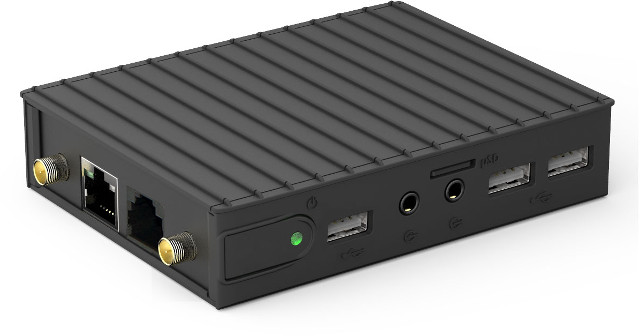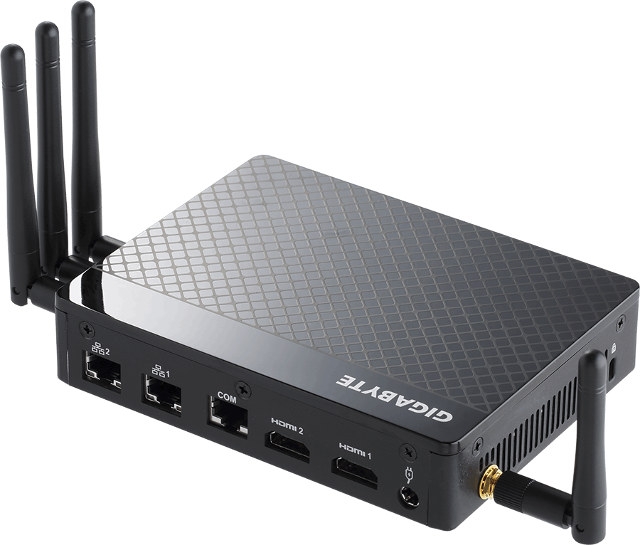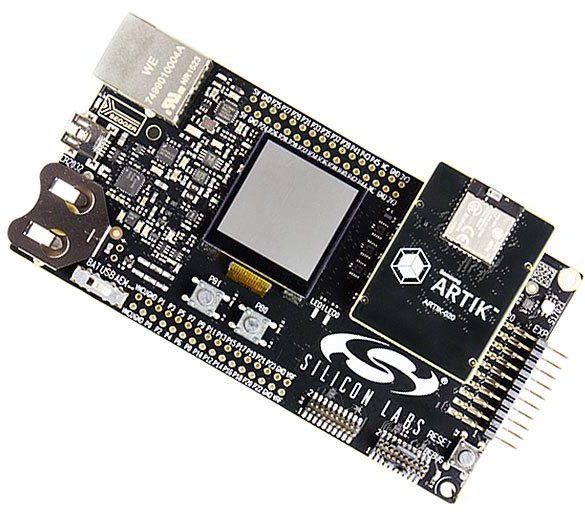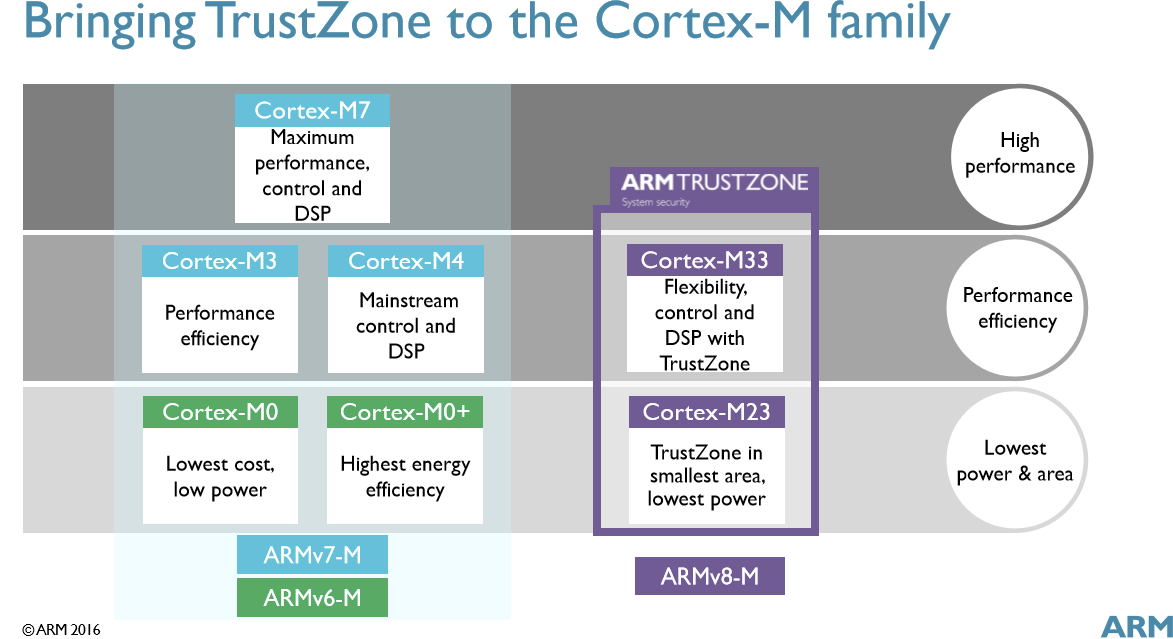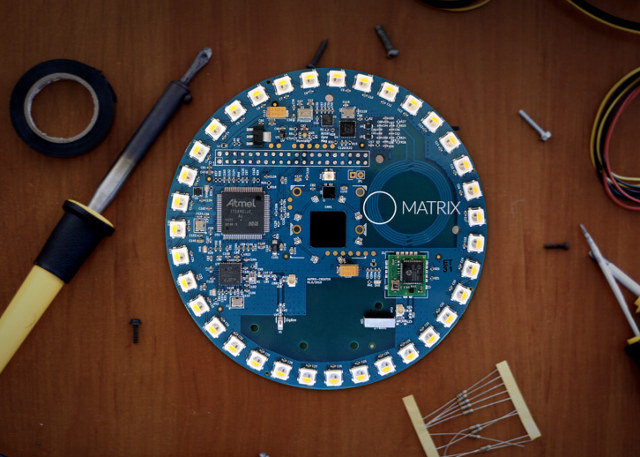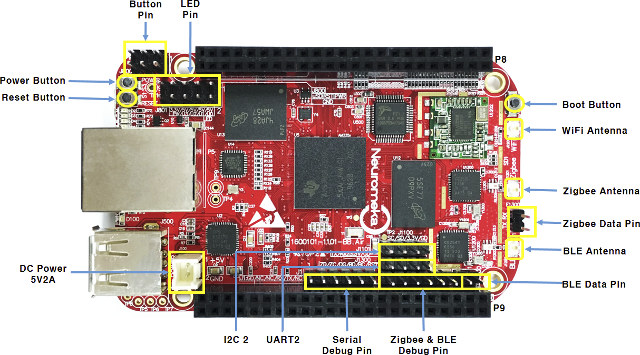CompuLab has introduced IOT-GATE-iMX7 compact fanless IoT gateway and industrial controller built around the company’s CL-SOM-iMX7 system-on-module, and offering Ethernet, WiFi, Bluetooth, 3G and Zigbee connectivity.Compulab IOT-GATE-iMX7 gateway specifications: SoC – NXP i.MX 7 dual ARM Cortex-A7 processor @ up to 1GHz with ARM Cortex-M4 core @ 200Mhz, 2D graphics engine System Memory – Up to 2GB DDR3L-1066 Storage – Up to 32GB on-board eMMC + micro-SD socket Connectivity Dual Gigabit Ethernet Dual band WiFi 802.11 a/b/g/n Bluetooth 4.1 BLE Optional 3G cellular module via mini PCie socket Optional ZigBee NXP JN5168 module Display – DVI up to 1920×1080 using a HDMI connector Audio – 3.5mm jacks for stereo line out, stereo line in USB – 4x USB2.0 host ports, type-A connectors Serial – 1x RS485 / RS422 port, RJ11 connector; 1x RS232 port, ultra-mini serial connector; 1x serial console via UART-to-USB bridge, micro-USB connector Expansion mini-PCIe socket, full-size embedded […]
Samsung Introduces Artik 530 IoT Module & Development Kit with WiFi, BLE, and Zigbee/Thread
Samsung unveiled Artik 1, Artik 5, and Artik 10 IoT modules & development board families in 2015, but since then they dropped the Artik 1 family, and instead launched Artik 0, Artik 5, and Artik 7 modules and boards late last year. More recently the company canceled the more powerful Artik 1020 development board, but the Artik project is still going on, as they’ve just added Artik 530 module & development kit to their Artik 5 family. Samsung ARTIK 530 module specifications: SoC – Unnamed Quad core ARM Cortex A9 processor @ 1.2 GHz with a 3D graphics accelerator System Memory – 512 MB DDR3 Storage – 4GB eMMC v4.5 flash Connectivity – Dual band SISO 802.11 a/b/g/n WiFi, Bluetooth 4.2 LE + Classic, 802.15.4/Zigbee/Thread, 10/100/1000M MAC (external PHY required) Other Interfaces and peripherals Camera – 4-lane MIPI CSI up to 5MP (1920×1080 @ 30fps) Display – 4-lane MIPI DSI […]
GIGABYTE EL-30 Apollo Lake Fanless IoT Gateway Powered by Intel Pentium N4200 to Launch in Q2 2017
GIGABYTE will soon introduce their EL-30 “Intel Apollo Lake IoT Gateway Solution” powered by a quad core Intel Pentium N4200 with 32GB storage, dual Gigabit Ethernet ports, dual HDMI ports, WiFi and Bluetooth connectivity, as well as a mini PCIe slot for 3G module or mSATA storage, and an optional Zigbee module. GIGABYTE EL-30 specifications: SoC – Intel Pentium processor N4200 with 4 cores, 4 threads @ 1.10 – 2.50 GHz with 2MB L2 cache, 18EU Intel HD Graphics 505 (6W TDP) System Memory – 2x SO-DIMM slots for DDR3L 1600/1866MHz memory up to 8GB Storage -32GB eMMC flash + 1x SD card slot + optional mSATA module Video Output – 2x HDMI 1.4b ports up to 3840×2160@30 Hz Audio – Via HDMI ports, 3.5mm audio jack (headphone + mic), Realtek ALC255 audio codec Connectivity 2x GbE LAN ports (Realtek RTL8111HS) Pre-installed WiFi + Bluetooth module in half-size mini PCIe […]
Qorvo GP695 “Smart Home” SoC Integrates 802.15.4, Zigbee 3.0, Thread, and Bluetooth LE
GreenPeak Technologies ultra-low power, short range RF communication technology company was acquired by Qorvo last year, and Qorvo has recently announced a GP695 system on chip (SoC) for smart home devices part of GreenPeak’s previous family of devices, and supporting multiple short range RF protocols. GP695 key features: MCU Core – ARM Cortex M4 Connectivity IEEE 802.15.4 ZigBee 3.0 Thread Bluetooth Low Energy (BLE) Qorvo Wi-Fi interference mitigation technology GP695 has been designed to be used in device such as a door locks, smart HVAC, smart security systems, connected video doorbells and intercoms, lightbulbs, smoke alarms, and leak detectors, and complements GP712 multi-protocol SoC designed for smart home gateways. Qorvo will feature live demonstrations of its smart home and IoT solutions at its booth during CES 2017, at Sands Expo, Halls A-D Booth #42114. There’s very limited public information, and no product page could be found in their website. Jean-Luc […]
Samsung Introduces $5 ARTIK 0 and $50 ARTIK 7 Smart IoT Module Families
Samsung unveiled ARTIK 1, 3 and 5 boards for the Internet of Things in 2015, and started to sell them, together with development with WiFi, BLE and Zigbee connectivity earlier this year. The Korean company has now announced two new family with ARTIK 0 modules powered by an ARM Cortex-M MCU and destined to be used in HVAC, lighting, industrial sensors, personal health monitoring and more, as well as ARTIK 7 family powered by an Octa-core Cortex A53 processor, and targeting IoT gateways. ARTIK 0 Family ARTIK 0 family is now comprised for ARTIK 020 with Bluetooth, and ARTIK 030 for applications requiring Thread and/or Zigbee. Beside the different radios, both modules share the same key features: MCU – ARM Cortex-M4 up to 40 MHz with Floating Point Unit, 256KB flash, 32 KB SRAM, advanced hardware cryptographic engine with support for AES-128/-256, ECC, SHA-1, SHA-256, and a Random Number Generator […]
ARM Introduces Secure Cortex-M23 and Cortex-M33 ARMv8-M MCU Cores, and Bluetooth 5 Cordio Radio IP for IoT Applications
ARM TechCon 2016 is now taking place in Santa Clara, California, USA, as ARM has made three announcements for the Internet of Things, the focus of SoftBank going forward, with two ARM Cortex-M ARMv8-M cores integrating ARM TrustZone technology, namely Cortex-M23 low power small footprint core, and Cortex-M33 core with processing power similar to Cortex-M3/M4 cores, as well as Cordio Radio IP for Bluetooth 5 and 802.15.4 connectivity. ARM Cortex-M23 ARM Cortex-M23, based on the ARMv8-M baseline architecture, is the smallest and most energy efficient ARM processor with TrustZone security technology,and targets embedded applications requiring both a small footprint, low power, and security. Its power consumption is low enough to be used in batteryless, energy harvesting IoT nodes, and is roughly a third of Cortex-M33 processor size, and offers more than twice its energy efficiency. Cortex-M23 is a two-stage pipelined processor, software compatible with other processors in the Cortex-M family. […]
$99 MATRIX Creator Raspberry Pi Add-on Board Features Plenty of Sensors, a 2.4 GHz Radio, and More
MATRIX Creator is a round-shaped add-on board for Raspberry Pi boards with various sensors, a microphone array, an LED array, a Xilinx FPGA, an Atmel Cortex-M3 MCU, wireless connectivity via Z-Wave, ZigBee, Thread, and NFC, as well as various I/Os…. MATRIX Creator specifications: FPGA – Xilinx Spartan 6 FPGA MCU – Atmel ATSAM3S2C Cortex-M3 MCU Connectivity – ZigBee, Thread, Z-Wave and NFC Sensors – Ultraviolet, pressure, humidity, temperature, 3D accelerometer, 3D gyroscope, 3D magnetometer Audio – 8x MEMs microphone array with Alexa support Expansion – 2x ADC, 17x digital GPIOs, SPI, I2C, UART; 40-pin connector for Raspberry Pi 2/3 Misc – 35x RGBW LEDs array, IR Rx/Tx, infrared ring for the Raspberry Pi NoIR camera I can’t think of the single application that would make use of all features of this board, but the least we can say is that it’s extremely versatile. The developers are providing MATRIX OS based […]
BeagleBone Air is a BeagleBone Black & Green Compatible Development Board with WiFi, Bluetooth LE, and Zigbee Connectivity
So far, if you wanted to add wireless connectivity to BeagleBone Black or BeagleBone Green, you’d either use a USB dongle, or a wireless CAPE, but Neuromeka, a Korean company has recently launched BeagleBone Air “IoT gateway” board, fully compatible with the two aforementioned boards (minus HDMI output), but adding on-board WiFi, Bluetooth LE, and Zigbee connectivity. BeagleBone Air specifications: SoC – Texas Instruments Sitara AM3358BZCZ100 Cortex A8 @ 1 GHz with NEON + PowerVR SGX530 GPU System Memory – 512 MB DDR3L @ 800 MHz Storage – 4GB eMMC + micro SD slot USB HS USB 2.0 client port (micro USB) HS USB 2.0 host poty (USB type -A) HS USB 2.0 host port on expansion header Connectivity 10/100M Ethernet (RJ45) WiFi 802.11 b/g/n via Realtek RTL8188US with SMA connector for antenna Bluetooth 4.0 LE via TI CC2541 with SMA connector for antenna Zigbee via TI CC2531 with SMA […]


